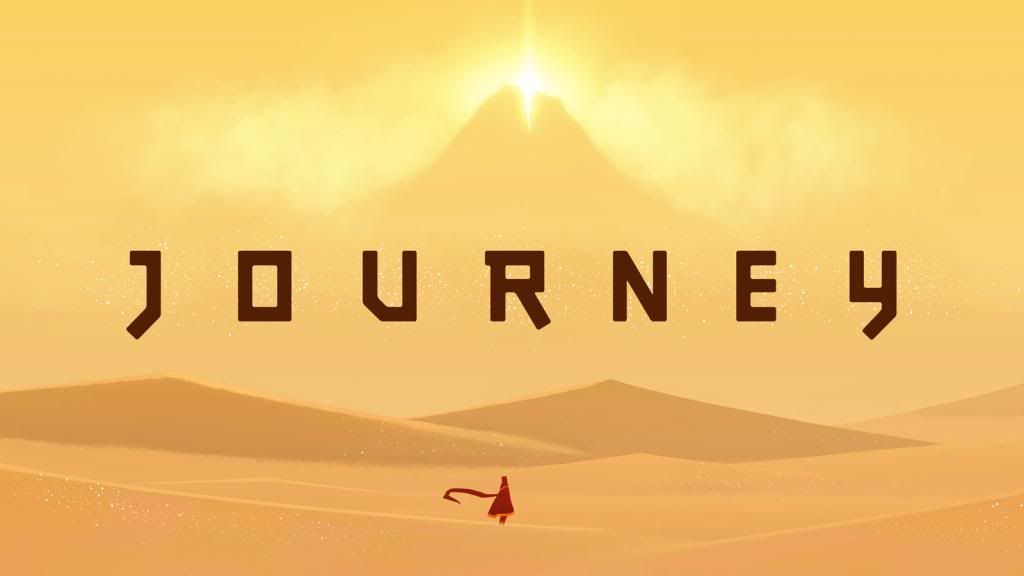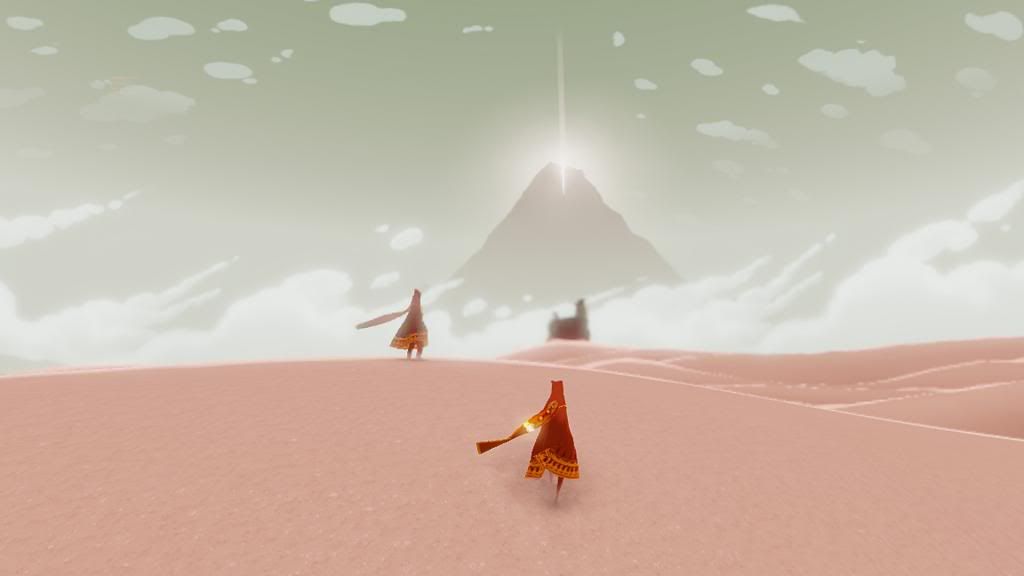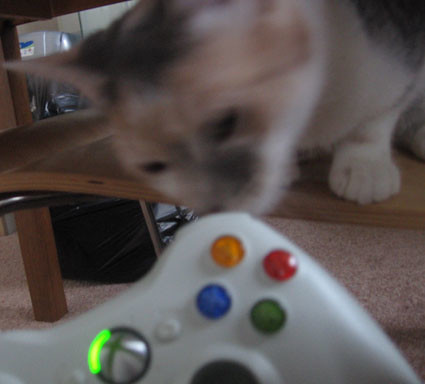I would be one of the first people to stand on rooftops to declare video games as a legitimate form of art. They convey stories in a way not possible in books, music, cinema, or the stage. They combine many forms of media into a singular experience to entertain and engage. Until now, there have not been a lot of games that fully encapsulate the experience of a work of art, the sort of thing that defies description and speaks to the engaged on a personal level. Some immerse with gameplay mechanics while others focus on story. Many video games struggle with balance between the two. Journey does it with such ease, it’s almost painful in its sublime beauty.
I had a feeling I’d start gushing about the game once I started typing. I’ll try and reign it in.

Journey is both the title and premise of this little PS3 exclusive indy title from thatgamecompany. Your character, nameless and without speech, begins by some markers at the edge of the desert. In the distance is a mountain, from which pours a geyser of light into the sky. It is mysterious and ominous at the same time, and it is your sole destination. You are gifted with a scarf, and when the scarf’s embroidery glows, you can use it to fly a little. That is literally all you know at the beginning of the game.
Games have taken great strides in immersion over the years, and one of the biggest steps has been the minimization of user interface. While impossible for things like MMOs, the less overt information that clogs the screen, the more room there is for the design team to show their work. Journey is almost completely without UI. There’s no health bar to speak of, no prompts for quick time events, no directional arrows or minimap or equipment or sub menus. You are shown an outline of your controller at brief moments when you start out, demonstrating how to act in one of the two permitted ways other than movement: you can fly, and you can sing. When you sing, you not only emit notes, a small sigil appears above your head; it is the mark you make upon the world.

As you travel, you may see other marks and hear other notes. As much as the expanse between you and the mountain yawns wide and desolate, you are not alone in your journey. Other players are with you, and some may try to endear themselves to you by helping out while others run in circles or sit quietly. You can leave them behind you, of course, pressing ever onward, but there’s no guarantee one won’t try to keep up. Yet, the path you must take is lonely, filled with signs that something terrible happened in the past, and there are perils ahead that are daunting to face on your own. You will not know the people you meet in Journey, at least not until the very end of the game when their names are displayed, but you can get a feel for them based on how they move, how much they sing, and how often they wait for you if you fall behind as you float, fly, leap, and slide from one obstacle to the next.
Before I circle back to all of that personal stuff, regardless of what you may draw from Journey, the beauty of the game cannot be overstated. The visual style is unique and breathtaking, from the way the wind moves the sands of the desert to an entire sequence that seems to take place under water yet clearly is in the open air. Life-forms made of tapestry float past you, ruins lean out from rocks with the weight of history upon them, and watching things react to the sound of your character’s voice never fails to delight. Couple these visuals with the haunting score and keen sound design, and you have a world that may engulf you before you’re aware of what’s happening to you.

I’ve been playing video games most of my life. I started on an old Atari 2600 back in the early 80s, and I’ve been trying new things and challenging games ever since. I’ve been racking my brain to remember a gaming experience like the one I had with Journey, and my memory is coming up short. Games have made me cry before, certainly: the death of a beloved character, watching a protagonist break down, that sort of thing. But for the life of me, I cannot remember a game making weep openly for joy the way Journey did.
I wish I could tell you why. I would love to lay out the entirety of the experience to communicate why I love it so much. But I can’t. I won’t do that to you. I won’t spoil it. You just have to trust me. If you’re reading this, and you own a PS3, you owe it to yourself to buy and play Journey. It is a masterwork of game design, a symphony in digital entertainment form, an exciting and harrowing and touching story from start to finish that you experience not by reading, or watching, but by participating. For me, it reinforces my belief that the very best journeys, in gaming or in life, are the ones we take together.



